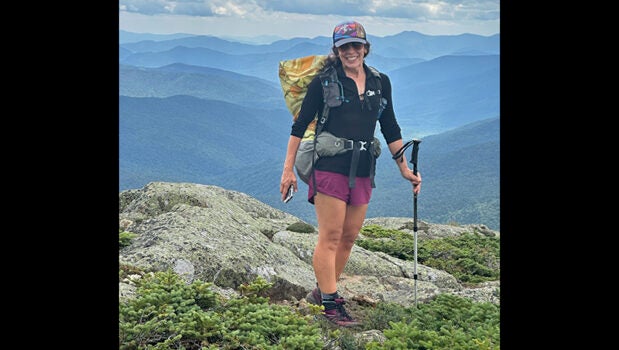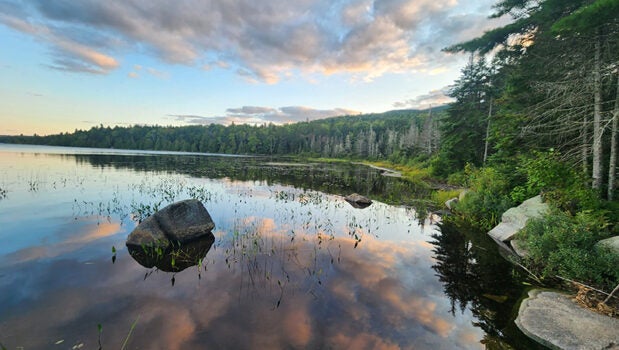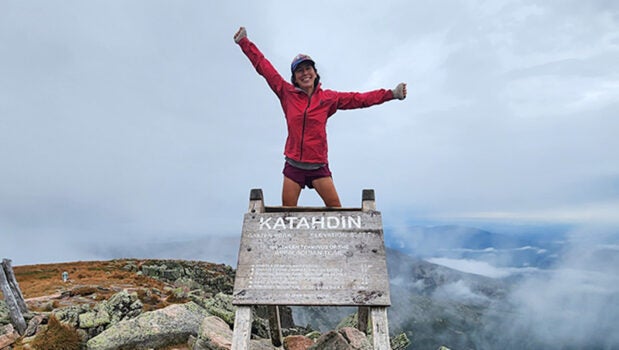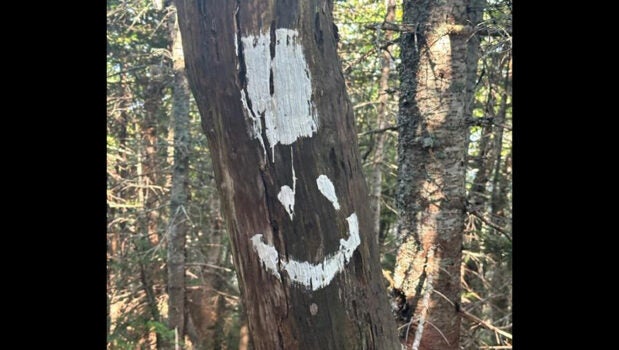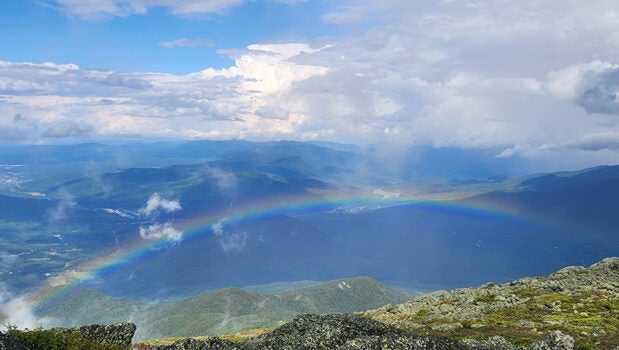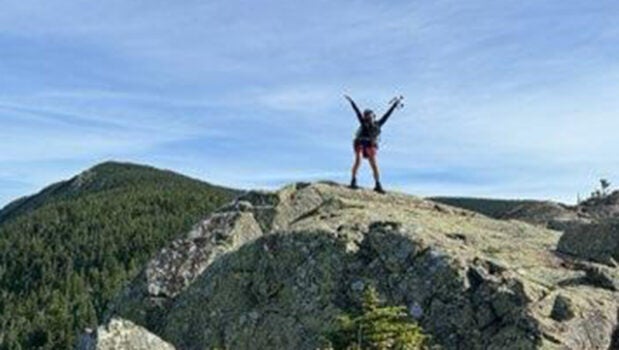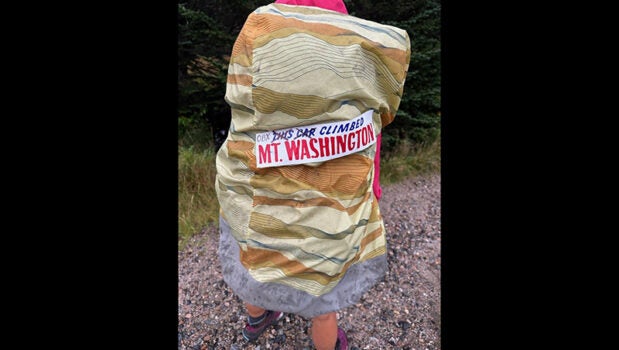Outer Banks outdoor enthusiast completes thru-hike of Appalachian Trail
Published 9:49 pm Wednesday, December 20, 2023
|
Getting your Trinity Audio player ready...
|
This fall, Stephanie Anderson of Colington returned home after almost five and a half months on the Appalachian Trail, successfully completing 2198 miles from Georgia to Maine, and raising almost $9,000 for the Cowell Cancer Center in Nags Head.
Though thousands attempt a thru-hike of the Appalachian Trail each year, only about a quarter of those complete the journey. Anderson was one of about a thousand people in 2023 to reach the finish line. The Coastland Times caught up with her to talk about the highs, the lows, and the best day of her trip.
Anderson was born and raised in Rhode Island, though she moved around a bit, living in Connecticut and Georgia before finally settling on the Outer Banks with her family seven years ago.
Though she had section hiked parts of the trail, she’d thought about attempting the entire trail for a long time. And finally, Anderson said, it was her year.
“I was really fortunate to have that window of opportunity between my job, my family life in general that I had a year that I could just do that,” said the former kayak tour guide. “I’ve got to do this.”
Though Anderson said she had many reasons for doing the hike, one of the big ones was to raise money for the Cowell Cancer Center in Nags Head. Several of her friends have died from cancer and she said many others are currently dealing with a diagnosis in various forms.
“It was a big wake up call for me … Nothing’s guaranteed. If you have a dream or something you’ve been wanting to try, just go for it. You’ve got to do it. It can’t wait for retirement because that doesn’t always pan out. I just really felt like I’ve got to try for this for the people who can’t,” she explained.
Anderson has raised $8600 of her $10,000 goal, and she’s hoping to bring in the rest at the OBX Women’s Adventure Club’s annual Polar Plunge on New Year’s Day.
This motivation carried her through some of the hard days on the trail.
“Nobody chooses to get cancer. Most of the people I’ve known who have gone through it—I know they have their tough days when they’re hurting so bad and they’re going through so much—but they do it with a smile on their face. It just inspired me. And because I was doing this fundraiser, it pushed me out there on my hard days because I was just like, ‘I can’t complain. I can’t quit. I chose this. This is a dream and I’m going for this and it’s hard but you know, you gotta keep going. You can’t let these people down.’”
She spent almost a year preparing for the hike—physically and mentally. Anderson was already in what most people would consider peak fitness. She ran ultra marathons (anything over 26 miles), she biked, did yoga. She is a member of the OBX Running Club and she started the OBX Women’s Adventure Club.
In 2022, she bought a backpack and started adding books and hiking up to the highest hill she could find. (Which, as it turns out, is the Wright Brothers Monument in Kill Devil Hills.) She even took a course with veteran Appalachian Trail hiker Warren Doyle in Mountain City, Tennessee, to help prepare mentally for the journey.
Some of Anderson’s most challenging days were early on. She began the trail on March 31 in Georgia, and hiked north through windy, rainy and sometimes freezing conditions. Some days the “trail” was an ankle-deep stream of icy water.
“It’s freezing cold and if you stop you think you’re going to have hypothermia. To eat you’re basically digging into your pack real quick and just shoving food in your mouth as you walk and you’re just wondering how you get through the day and how are you going to camp,” she recalled.
She camped each night in a tent in shelters along the trail. Though her longest day was 28 miles, she said most days she averaged about 16 to 20 miles. She would finish hiking around 7 or 8 p.m., depending on the amount of sunlight, and rise at 5 a.m. to be on the trail by six. She started out with a portable cook stove, but quickly discovered that rather than wait around for coffee and a hot breakfast, the key was to get moving early in the morning to get her blood pumping.
Most days she snacked on things like protein bars (oh so many protein bars!), tortillas with peanut butter or hummus, cheese if the weather was cool enough, and fresh fruit when possible.
Though a pescatarian before training for the hike, Anderson added in chicken as an additional protein source before she left. “Once I got on trail, like after two months I think it was, I was like ‘I need beef! Somebody give me steak! I need it so bad it’s ridiculous,’” she laughed.
One of the benefits of hiking the Appalachian Trail, Anderson said, was being able to “eat like a high school boy and not gain an ounce.” Petite to start with, she admitted that she lost quite a bit of weight on the trail because it was a constant struggle just to keep eating enough calories. She told the story of shivering once all through the night, telling her family the next day on a phone call that she thought she woke up with six-pack abs.
For the first thousand miles, she trekked mostly solo. “I really enjoyed that solitude and just that peacefulness and just being out there on my own.”
A lot of people begin the trail at the same time of year, so there’s a special camaraderie among thru hikers who are sharing the same experiences. Most hikers do a combination of solo travel and group hiking, coming into step—literally—with a few people with a similar pace and mutual interests.
Anderson met her “tramily” (trail family) about halfway through her trip, and she said she was thankful for both experiences. “I had all that time to just get sick of myself and listen to all those thoughts in my head and just sort through things in my mind but then that last half was so nice to have the camaraderie on those tough days when your body’s wearing out. To have that support of like ‘you can do, this you’re going to stick it out, it’s going to be ok.’”
“Without a doubt if they ever need anything, I don’t care if it’s today or 10 years or 20 years from now or whatever—we’re bonded for life.”
She and her tramily traveled mostly together—summitting mountains, traversing creeks, admiring vistas, talking, not talking, going into town together for supplies. It was common to hike alone throughout the day and catch up together later on.
Anderson talked about remarkable things that happened along the way. There are people, individuals or sometimes local churches, who live near the Appalachian Trail and minister to thru hikers. Hikers call them Trail Angels. Sometimes they provide a spread of free snacks and protein bars and Gatorades, sometimes it’s a ride into town, and sometimes it’s a full out meal.
“Some people go all out and they’re cooking you pancakes, eggs, sausage, coffee. And they’ll have a heater with chairs around it so you can keep warm. I met the kindest, most amazing people.”
Anderson loved the days and weeks and months of fresh air. She loved being in nature, without billboards and computers and visual clutter. Her soul was at peace.
Her favorite places along the trail were the Roan Mountains in Tennessee, Grayson Highlands in Virginia, and Rangeley, Maine. But one of the most special days of the whole hike was arriving at the White Mountains of New Hampshire, where she used to vacation with her parents as a child.
“When I got there that day, you could have told me anything—you could tell me the world is coming to an end, and I was just on cloud nine that day. It was just such a beautiful day for me.”
As the summer wore on, the trail began to take its toll. Anderson struggled with plantar fasciitis. She was diagnosed only months before leaving for the trip, but decided not to alter her plans. She was frequently in pain, but it didn’t slow her down. Anderson also thinks she contracted Lyme disease on the trail. Lyme is passed through a tiny deer tick, and parts of the trail are rampant with ticks. If undetected, the tick can pass the disease to its host, causing flu-like symptoms including severe exhaustion and muscle aches.
There were days on the trail that Anderson was so tired that she literally couldn’t go another step. “I would put my tarp on the ground and set my alarm for 12 minutes. I would fall asleep the second I hit the ground, then wake up 12 minutes later and get going.”
The day she summitted Mount Katahdin—the end of the trail in Maine—is one she will never forget.
As she looks back on her trip, which she is still processing, she feels like hiking the Appalachian Trail is a good parallel to life.
“You’re going to have some really—pardon the phrase—sucky days and then you’re going to have these amazing days where the views are gorgeous and the weather is beautiful and the birds are chirping and everything’s going your way. I think what you realize out there is that even on those tough days, those really hard days, no matter how bad you feel, no matter what you’re going through, what the hurt is, that you’re going to make it to the next day. And the next day can be amazing. You’ve just got to hold on to that.”
SUBSCRIBE TO THE COASTLAND TIMES TODAY!


